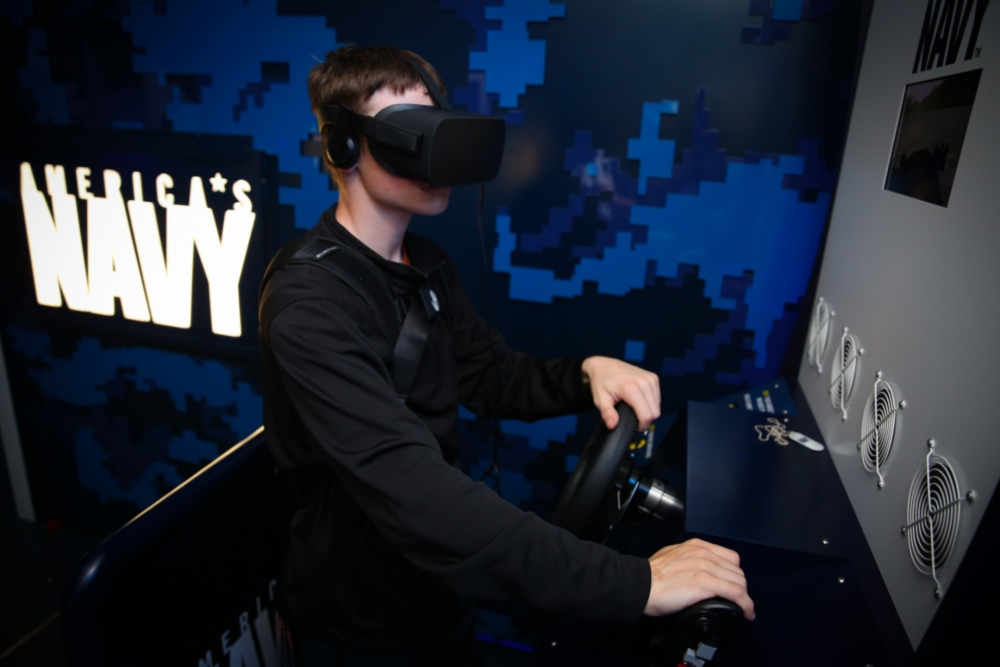The U.S. Navy sailed into Fleet Week with a virtual “flag” to attract recruits…and maybe inspire marketers.
During the week-long celebration of sea services in New York, the U.S. Navy launched a recruiting process that features its virtual reality experience, whereby users are placed inside of different tactical scenarios.
The VR experience, which was developed with agency Wunderman, introduces two realistic, high-tech combat simulation modules – riding a high-speed assault craft and experiencing a water extraction of a Navy SEAL team pinned down under enemy fire.
“We worked very hard to ensure the realism of the scenarios, even going as far as inviting Wunderman on mock missions with Navy personnel, so we could capture the experience with accuracy,” says Captain David W. Bouve, national director of Navy marketing and advertising at Navy Recruiting Command. “And by all accounts from those in the Navy, we created a very real experience.”
From wearable technology called a SubPac, to sounds of helicopter blades whirling and live mortar fire, and steering wheel and throttle system, the VR simulators give recruiters an opportunity they never had before.
“In years past, we’d show up to events with a straightforward approach of flyers, pamphlets, and word of mouth, with maybe a pull-up challenge,” says Bouve. “However, with this technology, we don’t have to tell them or show them what the U.S. Navy is like, they can experience it.”
Prior to entering the VR experience, users are given customized RFID-branded dog tags at registration, which tracks and collects their data across every touchpoint throughout the multi-station journey.
“By the end of the experience, the dog tag has collected quite a wealth of information about the candidate, giving U.S. Navy recruiters an opportunity to really personalize their conversations,” says Bouve.
The Navy reached its enlistment goals last year with 30,986 active components and 7,146 reserve components. However, this year, the Navy has increased its enlistment goal for active components to 34,200. Bouve is hoping campaigns such as the VR simulators will help reach this goal.
“These simulators provide us with a unique opportunity to truly reach people and let them know what a day in the Navy is like,” says Bouve.
The Navy is scheduled to continue to use the VR simulators for the foreseeable future, yet Bouve says, their size and scope may change.
“We would eventually like to add more scenarios,” says Bouve, “and hopefully, with time, create simulators enough that could be run out of several different recruiter centers at one time.”
Whichever direction the VR simulator campaign heads in the future, marketers and brands should take notice of the multi-stage, customized, immersive experience. If for no other reason than it dares to take a chance by doing something different.








